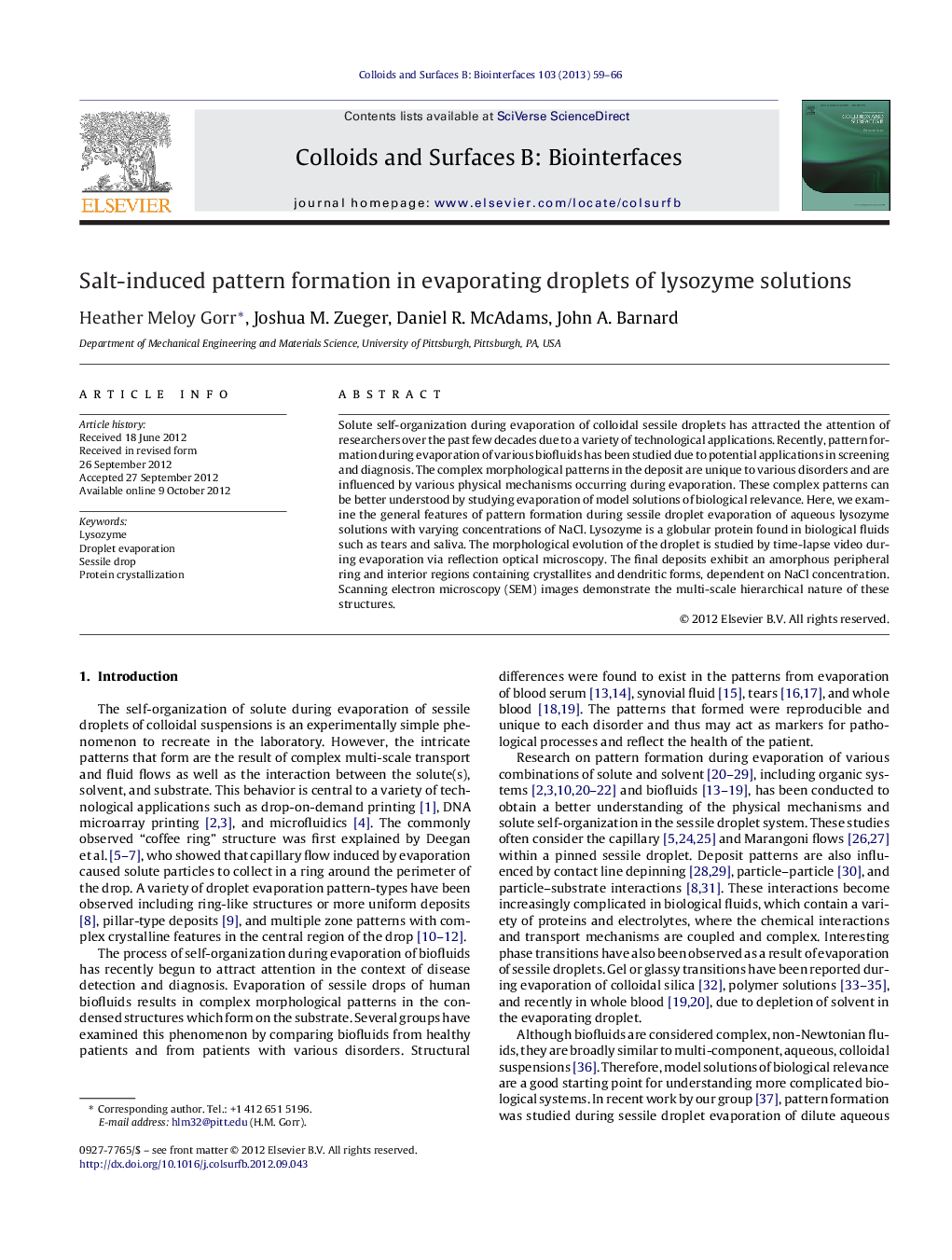| Article ID | Journal | Published Year | Pages | File Type |
|---|---|---|---|---|
| 600330 | Colloids and Surfaces B: Biointerfaces | 2013 | 8 Pages |
Solute self-organization during evaporation of colloidal sessile droplets has attracted the attention of researchers over the past few decades due to a variety of technological applications. Recently, pattern formation during evaporation of various biofluids has been studied due to potential applications in screening and diagnosis. The complex morphological patterns in the deposit are unique to various disorders and are influenced by various physical mechanisms occurring during evaporation. These complex patterns can be better understood by studying evaporation of model solutions of biological relevance. Here, we examine the general features of pattern formation during sessile droplet evaporation of aqueous lysozyme solutions with varying concentrations of NaCl. Lysozyme is a globular protein found in biological fluids such as tears and saliva. The morphological evolution of the droplet is studied by time-lapse video during evaporation via reflection optical microscopy. The final deposits exhibit an amorphous peripheral ring and interior regions containing crystallites and dendritic forms, dependent on NaCl concentration. Scanning electron microscopy (SEM) images demonstrate the multi-scale hierarchical nature of these structures.
Graphical abstractDried droplets from a series of 1 wt% lysozyme solutions with increasing amounts of added NaCl; (a) 0.00, (b) 0.01, (c) 0.10, (d) 0.50, and (e) 1.00 wt% NaCl. The pattern in (f) is from a drop containing only 1.00 wt% NaCl for comparison.Figure optionsDownload full-size imageDownload as PowerPoint slideHighlights► We study pattern formation during evaporation of aqueous lysozyme and NaCl solution droplets. ► The effect of NaCl content is examined by varying the solution concentration of NaCl. ► Morphological evolution of droplet evaporation is visualized with time-lapse video. ► Deposits exhibit an amorphous peripheral ring and interior regions containing crystallites and dendritic forms. ► Patterns are dependent on NaCl concentration.
